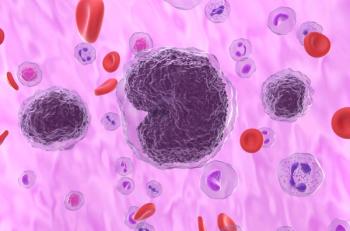
Pulmonary Arterial Capacitance Is a Strong Predictor of Mortality in PAH, PH-LHD
Targeting pulmonary arterial capacitance or compliance can improve overall survival and quality of life in patients with pulmonary arterial hypertension (PAH) and pulmonary hypertension secondary to left heart disease (PH-LHD).
Treatments that target pulmonary arterial capacitance or compliance (PAC) have the potential to improve overall survival and quality of life in patients with pulmonary arterial hypertension (
Different hemodynamic parameters have been used to predict mortality in patients with PAH or PH-LHD, but “studies have consistently shown that PAC is a better independent predictor of mortality in patients with PH compared to [pulmonary vascular resistance],” the authors wrote.
The researchers conducted a systematic review and meta-analysis to evaluate the pooled risk of mortality in patients with PAH and PH-LHD. Fifteen studies were included that reported the HRs for mortality per 1 mL/mm Hg change in PAC: 8 among patients with PAH and 7 among patients with PH-LHD.
Multiple studies were able to consistently demonstrate that PAC had prognostic significance in PAH and that baseline values and the change over time could be used to predict mortality. For instance, one study divided 104 patients with idiopathic PAH into 4 cohorts based on their capacitance. Although the group with the highest capacitance had no deaths, patients in the lowest capacitance group had a mortality of 62%. However, 1 French study of 981 patients did not find an association between mortality and PAC.
Among patients with PH-LHD, PAC was able to predict mortality attributed to heart failure with preserved ejection fraction and heart failure with reduced ejection fraction (HFrEF). One study of 724 patients with HFrEF found that a lower PAC was associated with more adverse clinical events of all-cause mortality. The researchers divided the patients into 2 groups: one with median PAC ≤ 2.5 mL/mm Hg and one with PAC > 2.5 mL/mm Hg. The patients in the ≤ 2.5 mL/mm Hg group had lower mean ejection fraction and higher brain natriuretic peptide, which indicates more severe disease.
According to the researchers, a reduction in PAC by 1 mL/mm Hg from baseline in patients with PAH was associated with all-cause mortality, with a pooled HR of 4.25% (95% CI, 1.42-12.71; P = .021). Among patients with PH-LHD, when PAC decreased, there was a nearly 30% higher risk of mortality (HR, 1.29; 95% CI; 1.07-1.56; P =.019), and when PAC increased, there was a 30% reduced mortality risk (HR, 0.70; 95% CI; 0.52-0.94; P = .03).
The authors concluded that not only is PAC a “strong and independent predictor of all-cause mortality, clinical worsening, and a valuable marker of prognosis in patients with PAH and PH-LHD,” but that it can be used as a therapeutic target.
“We suggest that PAC, which is a simple hemodynamic measurement obtained during the right heart catheterization, can be of great assistance to the treating cardiologists and pulmonologists in stratifying disease severity and clinical decision making,” they wrote.
Reference
Rajdev K, Lahan S, Wichman T. Role of pulmonary arterial capacitance in predicting mortality in patients with pulmonary hypertension: a systematic review and meta-analysis. Int J Cardiol. Published online February 20, 2021. doi:10.1016/j.ijcard.2021.02.043
Newsletter
Stay ahead of policy, cost, and value—subscribe to AJMC for expert insights at the intersection of clinical care and health economics.













































